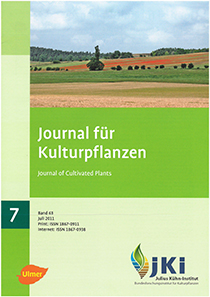General Surveillance for Effects of GM Crops on the Soil Ecosystem (Poster Presentation at the 4<sup>th</sup> International Workshop on PMEM of Genetically Modified Plants, Quedlinburg, Germany 2010)
DOI:
https://doi.org/10.5073/JfK.2011.07.03Keywords:
Genetically modified organisms (GMO), GM crops, post market monitoring, general surveillanceAbstract
EU Directive 2001/18/EC prescribes that genetically modified (GM) crops approved for cultivation should be submitted to General Surveillance (GS) in order to detect unanticipated adverse environmental effects. However, the modalities of GS are not clear and the Directive does not provide sufficient guidance. In the Netherlands, possibilities for setting up so-called above- and below-ground GS systems are explored. In this study issues regarding the development of a GS program for the soil ecosystem, are discussed. As a first step, the currently available scientific literature on the impact of GM crops was analyzed for potential unanticipated adverse effects on the soil ecosystem. The idea behind this is that the soil processes and/or taxa that are sensitive to GM crops will be useful indicators for GS.
Given the currently available methodological tools and the necessary knowledge of the normal variability of the soil ecosystem the development of a functional GS system for the soil ecosystem provides major challenges. Our surveillance of scientific literature revealed only very few and small unexpected effects of GM crops on the soil ecosystem. Based on the outcome of effects observed for GM crops in field studies only a limited number of indicators could be proposed, such as breakdown of organic material and changes in the nematode community. We suggest the incorporation of these indicators in a GS system. Depending on the development of tools to study arbuscular mycorrhizal (AM) fungi adequately in a GS system, this group could be an additional indicator for a future GS system. Based on the complexity of detecting unexpected effects of GM cultivation, we propose to combine data obtained with these indicators with information of existing monitoring networks and the use of other tools for surveillance.
Published
Issue
Section
License
The content of the journal is licensed under the Creative Commons Attribution 4.0 License. Any user is free to share and adapt (remix, transform, build upon) the content as long as the original publication is attributed (authors, title, year, journal, issue, pages).
The copyright of the published work remains with the authors. The authors grant the Journal of Cultivated Plants, the Julius Kühn-Institut and the OpenAgrar repository the non-exclusive right to distribute and exploit the work.







